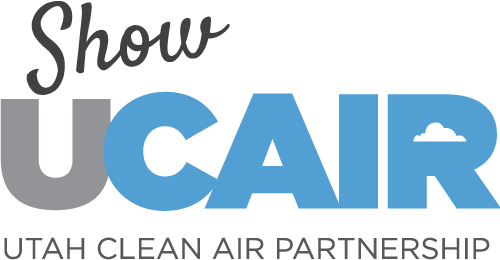At the September UCAIR Partner Meeting we had a great panel discussion on the correlation between water quality and air quality. The discussion was moderated by Emily Schilling, Holland & Hart Partner and UCAIR Board Chair. We had five fantastic panelists join our discussion.
Air Quality & Water Quality Panel Discussion
- Bryce Bird, Director
- State of Utah, Department of Environmental Quality, Division of Air Quality
- Erica Gaddis, Director
- State of Utah, Department of Environmental Quality, Division of Water Quality
- Thomas Holst, Sr. Energy Analyst
- Kem C. Gardner Policy Institute
- Laura Vernon, Great Salt Lake Coordinator
- State of Utah, Department of Natural Resources, Division of Forestry, Fire and State Lands
- Craig Miller, Hydrology & Modeling Manager
- State of Utah, Department of Natural Resources, Division of Water Resources
We started off with the opening question about why the correlation between water quality and water quality is so important. The panelists discussed how on days that Salt Lake and the surrounding areas exceeded the air quality standards there were a couple of scenarios that impacted the poor air quality. One prominent increase of air pollutants was due to wind sources drawing particulate matter from dried lake beds into the air. Utahns saw more impacts from dust on a local level especially along the Wasatch Front. In many ways, the discussion could shift to be more about water quantity instead of water quality. Water quantity is a key concern for many downstate residents who rely on water to sustain agricultural activities. Here in Utah, we rely on water irrigation activity to sustain our water use. Drought is a very real threat due to changing seasonal temperatures. Furthermore, severe drought has a multitude of negative effects to air quality such as dust, air borne particles, and increased wildfires. Air quality is an ever increasing and important issue and it is even more important now with Utah surpassing the historic low of the Great Salt Lake, GSL, in 1963. Low lake water levels mean the dust coming from the Great Salt Lake bed is increasing dramatically which is directly impacting Utah’s air quality. A few strategies that water quality experts are currently encouraging are increasing public conservation measures, changes in state law and policy that will allow more water to be shepherded into our lakes, along with offering agriculture initiatives to reduce water use in fields.
There have been multiple ways that municipalities have addressed water usage in the past specifically with ordinances of using water for landscaping. We are seeing more multifamily dwelling units developed which is addressing the recent large population growth, and policies at the local level that are recognizing the benefits of less water usage on landscaping. As we look beyond the Wasatch Front, you see the Uinta mountains and the ranges that hold our water as snow. The more residue and particulate matter that comes from the lake bed and blows into the mountains will cause earlier snow melt. This is another way that upstream populations will be impacted by GSL dust. A recent study out of Utah State University studied how the dust that is drawn into the runoff can affect the ecology of some of the rivers and surrounding lakes. In terms of the changing hydrology, absolutely there are impacts from the lakebed dust. We have had a lot of success with both air and water quality, but we have a lot of work to do as well. If you are interested in how to conserve water, please visit Slow the Flow.
Division of Air Quality & Smoke Update – Bryce Bird, Utah’s Division of Air Quality
This month, Bryce gave a quick update on air monitoring and values. The entire state experiences poor air quality with the wildfire smoke that has blown into Utah with both ozone and PM 2.5 air pollutants. Iron and Salt Lake County experienced many days that had poor air quality double of the health impact standard.
Partners Roundtable-UCAIR Partners:
Following the presentation, partners shared what projects and initiatives they are currently working on. These included:
Noah Miterko, HEAL Utah: We have two new hires with HEAL Utah. Alex Veilleux, Policy Associate and Kenna Patino, Grassroots Organizer.
Scott Brandeberry, Lancer Energy & Utah Clean Cities: Currently building four new CNG stations in Utah. One with the state’s first hydrogen station that will be commissioned in the first quarter of 2022.
Sadie Braddock, Weber State University: Our annual Intermountain Sustainability Summit will be held virtually this year on March 17th & 18th, 2022. We have our call for speaker proposals up now through 10/20/21. The Empower Northern Utah Energy Efficiency Program is also going on now.
Kevin Emerson, Utah Clean Energy: Utah Climate Week is coming up from 9/26-10/2. Utah Climate Action network has a listing on all the activities planned throughout the state this year so please check it out.
Shawn Teigen, Utah Foundation: We recently did a report titled Going for the Green about how Utah can thrive in climate economics. We are hoping to get feedback from the group.
Closing Mentions, Emily Paskett: Utah Outdoor Recreation Summit in Logan, UT on Sep 22-23. UCAIR will be moderating a panel. Look for us there. Thank you for joining us & have a great day!

